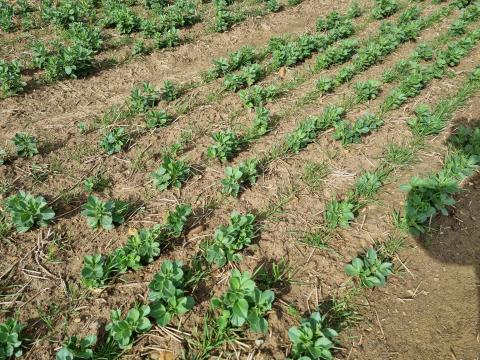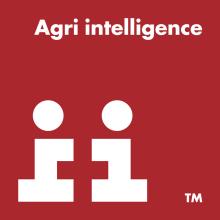Location of Trial: Moore Farm, Stubton, Lincolnshire.
Experimental layout:
Blocks are drilled using a Zurn plot drill, at the PGRO trial ground.
Design: non-replicated 20m x 48m blocks adjacent to each other of the following species/ types/ mixtures:
- Winter beans (Vespa)
- Winter bean (Vespa)/ winter wheat (Gleam) intercrop
- Winter wheat (Gleam)
- Spring beans (Lynx) (left fallow over winter)
Winter crops were drilled 11th November 2023 and spring crops will be drilled at the end of March 2024.
- Target plant density for intercrop: Winter wheat at 60% (175 plants/ m2), winter beans at 100% (25 plants/ m2).
- Winter bean target plant density 25 plants/ m2.
- Winter wheat target plant density 350 seeds/ m2.
- Spring bean target plant density 50 plants/ m2.
Winter losses in the wheat were high, and established plants per square metre were just under 200.
Assessments will be conducted as follows:
- Soil N probes – 2 per plot x 4 plots to give 8 total. Due to wet winter and difficulty accessing the site, these went in place on 5th March 2024.
- Greenhouse gas fluxes in the field (Gasmet DX4040 portable FT-IR gas analyser and li-cor survey chamber). Two chambers were placed in each plot on 5th March 2024.
- Soil texture.
- Soil structure (VESS).
- SMN – before and after legumes – spring sampling 0-30 and 30-60, followed by autumn sampling post-harvest.
- Soil nutrient status (P, K, and trace elements) – timings as above for SMN.
- SOM – spring and autumn (pre-drill and post-harvest).
- Soil carbon.
- Establishment – at 100% emergence.
- SPAD meter assessment.
- Disease, pest and weed evaluation to determine relative benefits and whether intercropping provides suppression.
- Harvest, moisture content and yield.
- Grain and straw analysis for protein (N) content.
- Met data is recorded at the Stubton site.
- Satellite imagery will be available if required, although may not be of high enough resolution for the plot size.
Historic data are collected from previous legume trial sites to determine overall N availability (taking into account N applications in rotations) over 5 years from legume cropping. SMN will be monitored at trial sites for 5 years in following crops.








